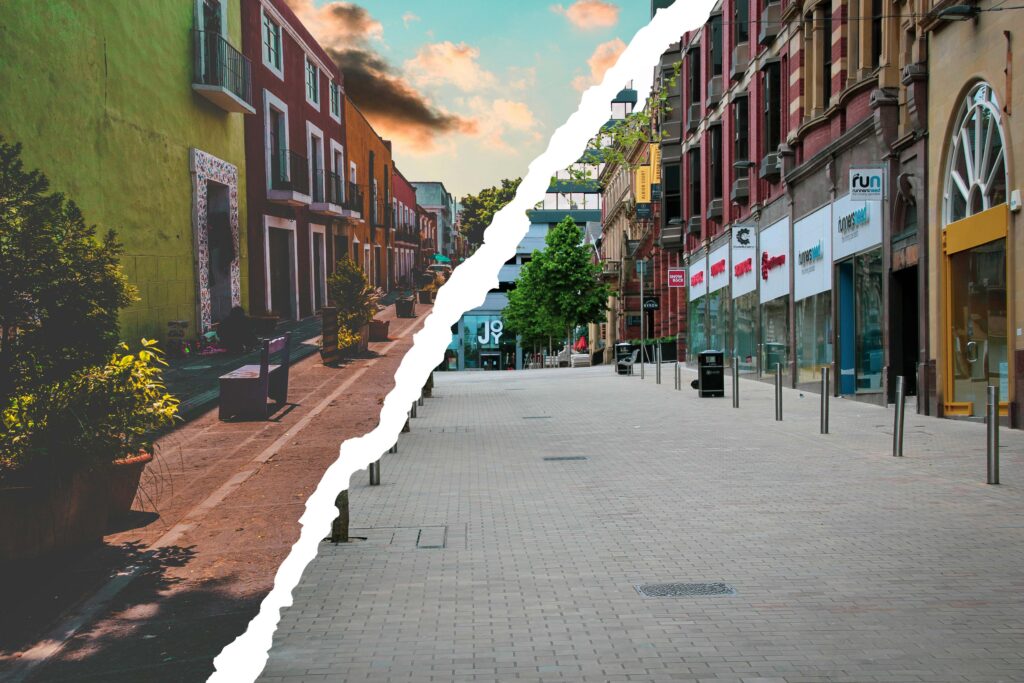With increased demand for residential homes in the rental market, investors turn away from commercial properties
Commercial property has historically been viewed as the more profitable asset class but more recently, residential property values have taken over. This is evident in the number of companies, across the board, converting commercial to residential property; from John Lewis investing in Build to Rent homes, to the many former office blocks that have been converted to residential units.
With commercial properties: an example of this is Peartree House, a former office block in Harlow, Essex. LRG recently purchased the 26 apartments and are confident that with an annual yield of 6.58%, it will resell very successfully.
Consequently, many hotel and catering businesses are being re-purposed or restructured. However, hotels are often attractive, perhaps historic, buildings, ideally located in popular areas close to amenities or with facilities within the complex itself which makes them potentially very desirable for a range of new uses. With a little investment in change of use, a former hotel can provide an excellent financial return.
Conversion to residential
The UK built fewer houses in 2022 than since the second world war, according to an analysis by the Home Builders Federation. And with some significant blockages in the planning system (from issues of nutrient neutrality creating moratoriums across entire local planning authorities; to local plans being shelved due to political uncertainty) land for housebuilding is limited.
Our planning consultancy, Boyer, advises clients in the hospitality and office sectors, both in seeking planning consent for change of use to residential or doing so under Permitted Development Rights (a planning route which is generally quicker and less expensive than a full planning application).
Full planning permission is required if a building’s owner wishes to make structural changes to their property in converting it for residential use. However, the relatively recent option of permitted development rights (PDR) can also provide permission for change of use without the need of a full planning application.
Going down the planning route – whether a full planning application or change of use application – requires council support. In areas with a shortage of homes this may be easier to achieve than in those in which the demand is for employment, A good planning consultant will be able to advise on, and make a case for, either. The earlier you understand what you can achieve, what is viable and what the limits are, the better informed your outlook will be.
There are certain pitfalls to look out for. One is that residential units require a good EPC rating, and especially with older buildings, the costs of conversion and upgrading to meet modern energy efficiency standards can be considerable.
Conversion to student accommodation
Another option is to convert a hotel or office block into student accommodation – another sector crying out for additional bricks and mortar: research cited by the Higher Education Policy Institute suggests that there is a current shortfall of 207,000 student beds in the UK, likely to rise to 450,000 by 2025.
Hotels, with their shared spaces and additional facilities, are particularly well suited to the co-living lifestyle sought by students. Also room sizes and the inclusion of en suites tend to be well suited to student accommodation than self-contained flats. This means that a conversion may be achieved through permitted development rights.
When considering the conversion, city centre sites tend to be more desirable to operators than rural sites.
The challenges include convincing the council that the scheme can be managed in a way that won’t impact on the existing community. It is generally easier to secure planning permission for student housing if an occupier has been agreed (ie, that the development isn’t speculative), so if there’s a nominal agreement with a university or college, you can demonstrate demand and have a greater chance of winning planning consent.
Conversion to later living accommodation
A further opportunity is to convert a commercial building into retirement accommodation. The recently published Mayhew Review found that the property sector is failing to adapt to the impact of an ageing population, with only around 7,000 retirement homes being built each year in contrast to the 50,000 new units needed annually. Given that the 65 + population is anticipated to increase to 17.2 million by 2040, there is clearly a significant demand and supply imbalance to be resolved.
Investors often favour this use, because density is a key factor in the viability and profitability of any property development and with later living schemes averaging approximately 250 apartments, they are an attractive investment proposition.
With the exception of a few ramps, schemes such as these demonstrate that providing such a community does not require a structural re-think in the layout, but an attitudinal shift. Facilities suitable for lounges and clubrooms, staffing assistance, well-being suites, and 24 hour concierge are either already present in commercial buildings, or can be provided with little change to the built environment.
Conclusion
While increased interest rates and build costs, along with other factors, mean that getting financing for property-heavy investments has become more challenging, conversions offer a great way of resolving that impasse.



